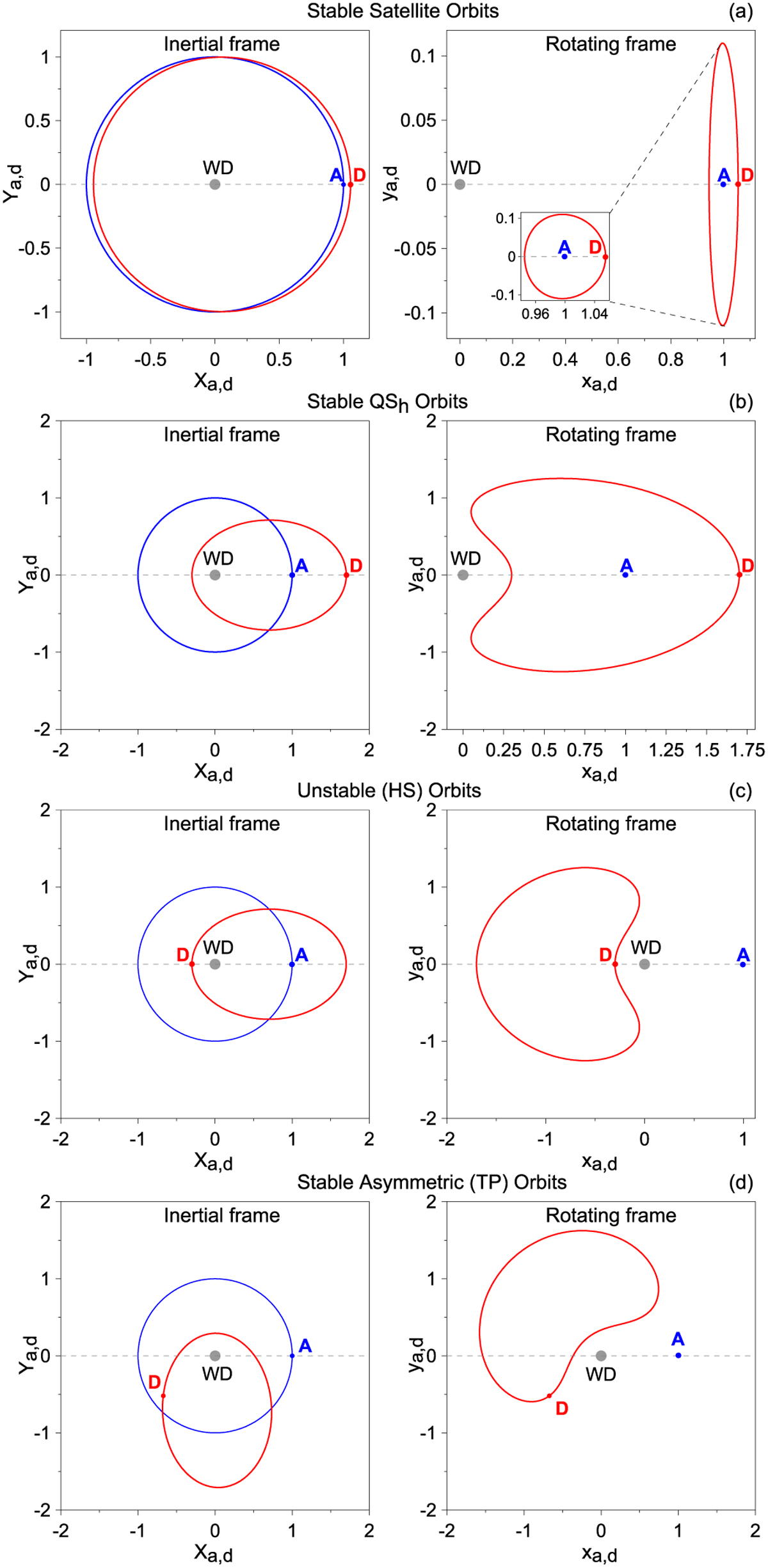Fig. 1

Download original image
Periodic orbits in the 2D-CRTBP, where the asteroid, denoted by A (in blue), moves on circular orbits (ea = 0), and the dust particle, D (in red), moves on Keplerian ellipses that rotate around the WD (grey dot), when viewed on an inertial frame of reference (left column). These orbits are exactly periodic in the rotating frame of reference (right column). The orbits were computed for one period, T = 2π, and both bodies orbit the WD with the same period (corresponding in physical space to a distance unit of about 1 R⊙ and to an orbital period of about 4.5 hours). The red dots represent the position of the dust particle at t = 0. In panel a, the stable retrograde satellite orbits that belong to family f are demonstrated, where the dust particle moves on almost circular orbit. In panels b and c, the symmetric stable QSh orbits of family f, and the symmetric unstable horseshoe (HS) orbits are shown, respectively. In panel d, the stable asymmetric tadpole (TP) periodic orbits are shown. The eccentricity of the dust particle chosen for these panels was ed = 0.7, and the initial conditions were taken from the families presented in Fig. 5.
Current usage metrics show cumulative count of Article Views (full-text article views including HTML views, PDF and ePub downloads, according to the available data) and Abstracts Views on Vision4Press platform.
Data correspond to usage on the plateform after 2015. The current usage metrics is available 48-96 hours after online publication and is updated daily on week days.
Initial download of the metrics may take a while.


